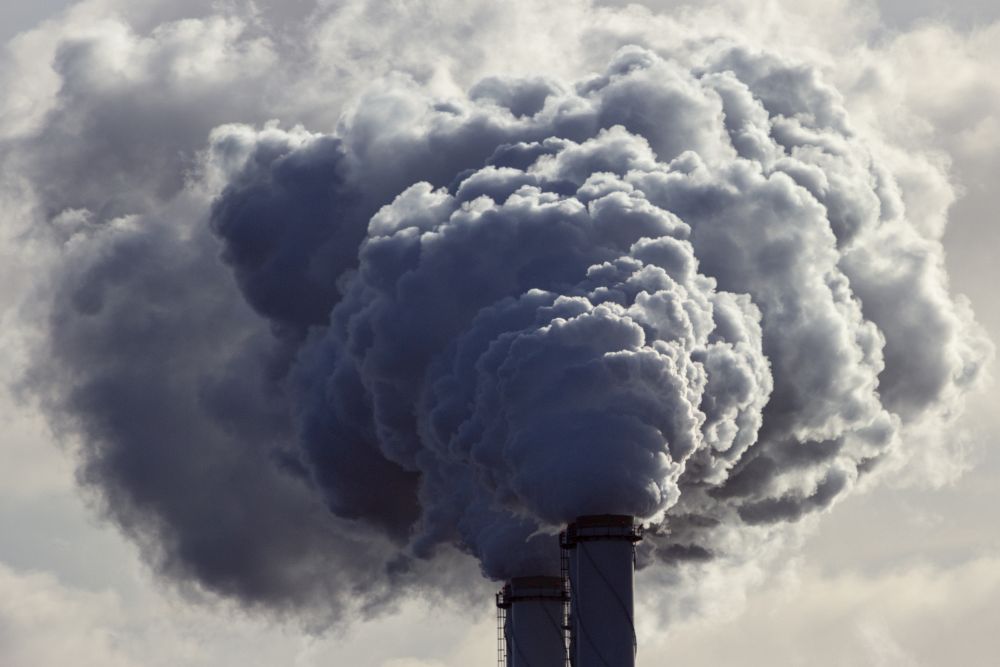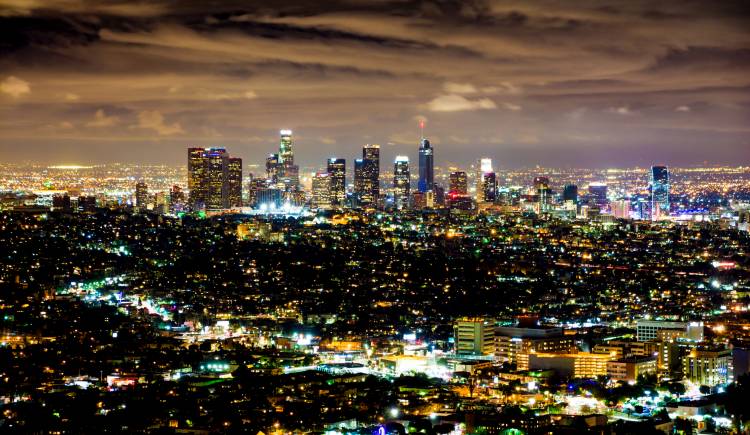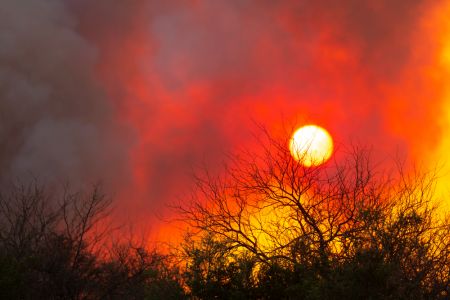The Huge Price We Pay for Pollution
Pollution stems from countless origins, frequently in amounts too minor for immediate recognition, but which over time accumulate. Collectively, all of us pay a huge price when they impact our health and lead to diseases, impairments, and death. Cost that other species we depend on also pay.
06/17/2024

Pollution’s Shadow over Earth’s Future
Worldwide, pollution is a huge and growing problem; the American Chemical Society defines it as “Pollution – the presence or introduction into the environment of a substance or thing that has harmful or poisonous effects (one example is toxic waste).” From this simple definition, we can take it as a fact that pollution endangers our health and well-being and that of many other species, damaging the delicate balance of our planet’s critical ecosystems.
Historically, pollutants were thought of as having been derived primarily from natural phenomena, such as volcanoes, fires, methane emissions, algal blooms, etc. Still, since our entry into the industrial age and to the present, the major sources of pollution have shifted to those created by humans. Industrial emissions, vehicle emissions, and sewage, chemical, and oil spills top the list.
The list of pollution sources is endless, occurring in innumerable forms, such as air, water, soil, noise, and light pollution. Placing many of the pollutants into categories is often difficult, or even impossible, as many clearly do not fit cleanly into only a single category. For instance, oil spills at sea clearly cause water pollution, but many oil spills also affect land areas and contribute to air pollution.
What is clearly evident and beyond dispute is that pollution directly affects people, animals, plant life, and the environment at large.
Air Pollution

Pollution from a coal-burning power plant. iStock.com/DWalker44
Air pollution refers to harmful substances found in the Earth’s atmosphere, such as chemicals, particulate matter, and biological molecules. As noted above, these pollutants are emitted by both natural and human-made sources, such as factories, transportation, construction, and the burning of fossil fuels.
In the past, it was either out of sight or largely ignored and tolerated as something one simply lived with. Those days are gone, and there is a clear understanding that air pollution has enormous negative effects on human health, from cardiovascular illness to respiratory diseases and others. Only very recently has the impact of air pollution on the environment been recognized and gained the attention of those outside the scientific community. There is now little doubt that human-generated gases are implicated in the ever-increasing global warming that is affecting the planet, people, animals, and other species.
The Deadly Threesome
Carbon dioxide (CO2), methane (CH4), and nitrous oxide (N2O) are the big three that are driving global warming. Each of them is responsible for trapping heat in the Earth’s atmosphere and is chiefly produced by human activities.
The most abundant of the three gases is CO2, which is currently being released into the atmosphere in increasingly vast amounts that have never been seen before. Coal, oil, and natural gas used for energy production, transportation, and industry are the leading sources of CO2.
Per the United States Environmental Agency (EPA), methane is the second most abundant climate destroyer, and its levels have doubled over the past two centuries. Second to the amount of CO2 released, this gas is 25 times more proficient at trapping atmospheric heat. Methane is increasingly being produced, and the largest contributors to it are when wetlands, permafrost areas, and rice paddies warm due to global climate change. This results in organic materials decomposing faster, and those that do so in the water, without oxygen present, produce methane. The only blessing this gas has is that its life span is short. Real reductions of it in the atmosphere will, if we stop releasing it, result in rapid and large reductions in the warming effects it exerts.
The last of the three climate-warming gases is nitrous oxide N2O. Commonly known as laughing gas, it is used in dentistry and other medical applications to help with anxiety. It has a warming potential that is 300 times that of carbon dioxide. Burning by humans of biomass, fertilizer, and industry use all contribute to this climate-altering gas that, in addition to trapping heat, also depletes the ozone layer.
Higher temperatures also lead to more ground-level ozone, a harmful pollutant that damages crops, vegetation, and many other materials such as paints, leather, and textiles. While nitrous oxide has the least effect on global warming, like methane, it remains in the atmosphere for up to 100 years.
As always, all things in the environment are linked together. Air pollution drives global climate temperatures, leading to warmer and rising oceans, which ensures that glaciers are melting, which drives more extreme weather events.
The linkages between air pollution and our health are sometimes quite visible, but more often, they are subtle and hidden. Respiratory illnesses, decreased lung function, and shortened life expectancies are often linked to polluted air but initially occur largely undetected. Animals and plants are heavily impacted by it, leading to reduced biodiversity as pollutants kill or weaken various species. This has a related and cascading effect on our food chains and puts further species, including us, at risk. Air pollution also contributes to water pollution, which harms aquatic life.
Besides the ecological and health consequences of pollution, the economic impact of air pollution must not be overlooked. Control of pollution and costs to our health-related to diseases caused or exacerbated by air pollution are a financial burden on all of us. Crop yield losses due to poor air quality also have significant economic implications.
Water Pollution

Environmental factory workers are checking oil stains from the factory effluent system. iStock.com/Phonix_a
Water pollution globally can be categorized into two main types, freshwater and marine, and it is about introducing harmful substances, such as toxins, heavy metals, and pathogens, into our water sources. These pollutants find their way into the water through both natural sources processes and human activities, and all of them have impacts. Many natural sources, such as volcanoes, cannot controlled by us and have been forever a part of the Earth’s natural processes. Undeniably, there is little we can do to stop a volcano, and the best choice is to run from it as fast as possible.
Those that mankind contributes are a different story since we are the producers and, as such, have control over the processes. From plastic pollution to fracking, the list of ways that are degrading the planet we live on is almost endless.
This is a partial list of pollution that we are creating, some more than others:
- Alkylphenols & alkylphenol ethoxylates
- Antifouling Agents (like Tributyltin)
- Asbestos
- Atrazine
- Benzene
- Bleaching agents
- BPA (Bisphenol A)
- CFCs (Chlorofluorocarbons)
- Chlorine
- Cyanides
- DDT (Dichlorodiphenyltrichloroethane)
- Dioxins
- Flame Retardants
- Formaldehyde
- Glyphosate
- Heavy Metals (like cadmium)
- Heavy Oils & Lubricants
- Honey
- Industrial Radioactivity
- Lead
- Mercury
- Microplastics
- MTBE (Methyl tert-butyl ether)
- Nitrates
- PAHs (Polycyclic aromatic hydrocarbons)
- PCBs (Polychlorinated biphenyls)
- Perchlorates
- Petroleum Hydrocarbons
- Pesticides
- PFAS (Per- & poly-fluoroalkyl)
- Phosphates
- Pharmaceuticals
- Sewage & Wastewater Effluents
- Synthetic Dyes
- Synthetic Hormones
- Surfactants & Detergents
- TCE (Trichloroethylene)
- Volatile Organic Compounds (VOCs)
According to the World Health Organization (WHO), more than 160 million chemicals are known to humans, and from 40,000 to 60,000 of them are found in commerce, so the above is a tiny sliver of them. Some are of great concern as regards the health of people and all other species. And there are so many of them that no one is really sure what the total effects are, and that’s not good at all.
One of the chemical groups that is of concern are those known as per- and poly-fluoroalkyl substances, or PFAS for short. A 2023 study by the United States Geological Survey (USGS) found that PFAS chemicals, also known as forever chemicals, are estimated to be in 45% of the nation’s tap water. In some water systems, the levels of PFAS were found to exceed the interim health advisories from the United States Environmental Protection Agency (EPA).
PFAS chemicals are widely used in food packaging, cleaning products, fabrics, clothing, cookware, and cosmetics. They do not easily break down and are long-lasting in our bodies and the environment, and there is evidence that they lead to adverse human health effects. They are found in many species in the environment and negatively affect biodiversity.
Another great water pollution concern is the soaring number of microplastics they contain, where they are ingested by many species and end up in our fish dinners. Microplastics are everywhere in the environment: in our soils, water, the air, and now in our bodies.
According to the Smithsonian Magazine, microplastics are found in the most remote places on the planet – even in the Antarctic snow. The most damming news around our use of plastic and plastic pollution is from a study by Joana C. Prata, where it is stated that “Microplastics have already been found in human tissues and excretions, including lungs, airways, liver, spleen, placenta, colon, blood, and feces.” Absolutely nothing about the last sentence can be construed as positive, and there are already reports of the damage these particles are doing to our bodies and health.
Land Pollution

The ever-growing accumulation of plastic waste and debris in our environment exacerbates soil pollution, posing a significant threat to our planet’s health. iStock.com/Neenawat
Pollution of our lands has been an issue for hundreds of years, from both natural occurrences and human activities. While there have always been natural calamities such as earthquakes, volcanic activities, floods, and landslides that have contaminated land areas, today, most pollutants affecting the planet result from human negligence and industrialization.
Historically, and until very recently, land was perceived as vast and endless. If we polluted a location, there was hope in knowing that one could simply move to a different place. But as the number of persons on the planet has dramatically increased to almost 8 billion, our uses and abuses of land have created massive problems, and there’s an increasing realization that, for our good and the good of the planet, our pollution and contamination practices need to be decreased.
Silent Culprits
Pesticides, Herbicides, and Fertilizers: Widely used in modern agriculture, excessive use of these chemicals is contaminating the Earth’s soils, affecting fertility, and leaking into groundwater sources.
Waste Dumping: From household waste to industrial residue, the improper disposal of wastes, especially non-biodegradable items like plastics, adversely affects the quality of the land.
Mining Activities: Extracting minerals and resources from the Earth often leaves vast areas stripped and filled with harmful by-products.
Chemicals and Heavy Metals: Many industries release hazardous chemicals and heavy metals, either accidentally or due to inadequate waste treatment, into the soil. Arsenic, lead, mercury, and chromium are some common culprits.
These are some of the more pervasive and persistent:
- Asbestos
- Dioxins
- Electronic waste components
- Heavy metals
- Heavy oils and lubricants
- Lead-acid batteries
- Microplastics
- Pharmaceutical residues
- Pesticides like DDT
- Polycyclic aromatic hydrocarbons (PAHs)
- Polychlorinated biphenyls (PCBs)
- Tires
- Untreated sewage sludge
- Used motor oils
Along with the very limited list of pollutants, such as asbestos and heavy metals shown above, tens of thousands of chemicals are in use today, and this list is only a very small tip of the iceberg. Each of these pollutants and thousands of different ones have potential long-term consequences affecting plant, animal, and human life.
Recent studies have linked land pollution to various human health issues, including skin conditions and cancers. Toxic chemicals in the soil can be ingested by plants, which then enter the food chain and impact both animal and human health. Biodiversity, upon which we absolutely must depend, is also degraded as species face contaminant poisoning and loss of habitat due to rampant pollution.
Land pollution presents multiple challenges. Devaluation, loss of fertile soil for agriculture, and the high costs incurred for restoration and cleanup are but some of the significant concerns. While the finger is often pointed at the problems with waste dumps, many of its impacts are subtle, pervasive, and unseen, affecting everything from food security to public health.
Light pollution

Light pollution disrupts wildlife behaviors and threatens their habitats. iStock.com/Thomas Faull
Beginning in the late 19th century, with the invention and widespread adoption of Thomas Edison’s incandescent light bulb, electric streetlights began replacing gas lamps, leading to nighttime illumination as we know it. In the pre-industrial past, light pollution was nonexistent when people relied on limited man-made sources like candles, torches, and wood fires. These light sources left nightscapes largely undisturbed, allowing people to view the incredible beauty of starlit skies and maintaining the natural nocturnal environment essential for various species.
As more and more use of artificial lights flooded the night sky, there was growing concern for our environment and the creatures inhabiting it. This pervasive artificial lighting doesn’t just mar the beauty of the starlit night sky; it wreaks havoc on various species. Migrating birds and insects, which rely on the natural light of stars and the moon to chart their courses, often become disoriented by this artificial glow. Distortions that can lead to fatal collisions with infrastructures like buildings. Additionally, some creatures are attracted to the lights and alter their feeding, breeding, and rest cycles.
In more severe cases, as with sea turtles, light pollution can deter them from nesting on beaches, endangering their populations and the species’ survival. Nocturnal activities of some amphibians, like frogs, depend on natural light cues. Disruptions hinder their breeding activities, leading to declining populations.
There are viable, sometimes easy, solutions that help mitigate light pollution’s impact. Shielding can direct the illumination downwards, limiting the unnecessary light spread. Opting for dimmer lights can substantially reduce the light pollution footprint. Simple actions, like using motion sensors and turning off lights when not in use, can also make a significant difference. Actions we all can take for a more healthy planetary biodiversity. Something essential to our survival.
Noise Pollution

Noise pollution significantly threatens humans and wildlife’s health and well-being. Stock.com/DSGpro
Industrialization and urbanization significantly changed ambient soundscapes during the late 19th and early 20th centuries. Before this period, noise pollution was largely absent from the human experience, as most people lived in relatively quiet agrarian settings. People’s auditory experiences consisted of natural sounds: the chirping of birds, the rustling of leaves, and the occasional clamor of marketplaces or festive gatherings.
With the advent of machinery, automobiles, and the dense clustering of businesses and residences in urban areas, the volumes began to rise. In modern times, the effects of noise pollution have been well-documented. Chronic exposure to loud noises has been linked to various health issues in humans, including stress, sleep disturbances, and even heart problems. The natural world isn’t spared, either. For instance, the noise from ship engines and underwater drilling can severely impact marine life, especially species like whales and dolphins, which rely heavily on sound for communication and navigation. Wildlife on land have also suffered as their habitats were either encroached upon or rendered uninhabitable due to the constant load noise, which affected their communication, mating, and hunting behaviors.
Turning down the volume of all the sources is not easy to accomplish, but it is vital. Not just for our peace of mind but also for the balance and health of the ecosystems in which we cohabit.




















